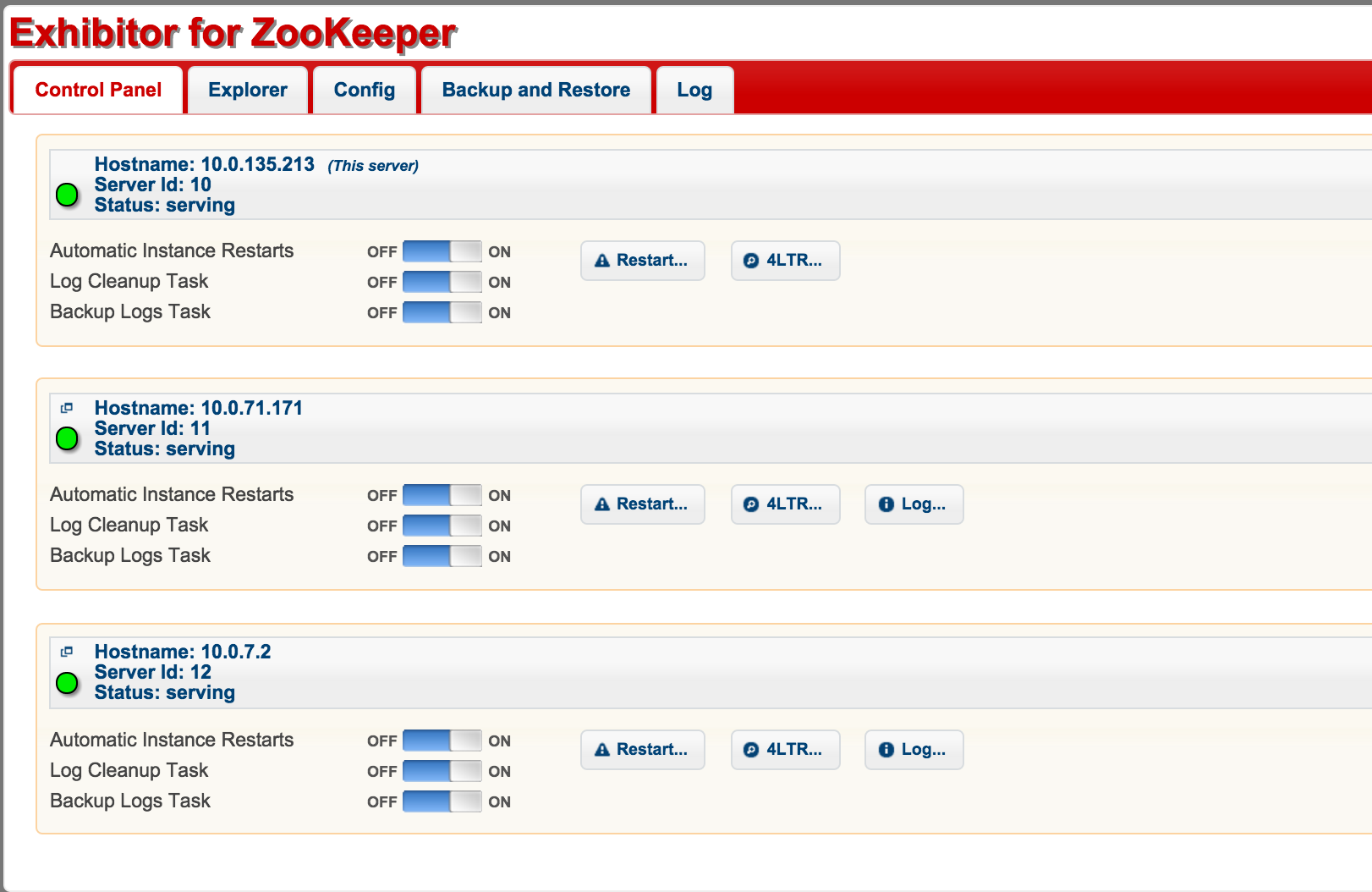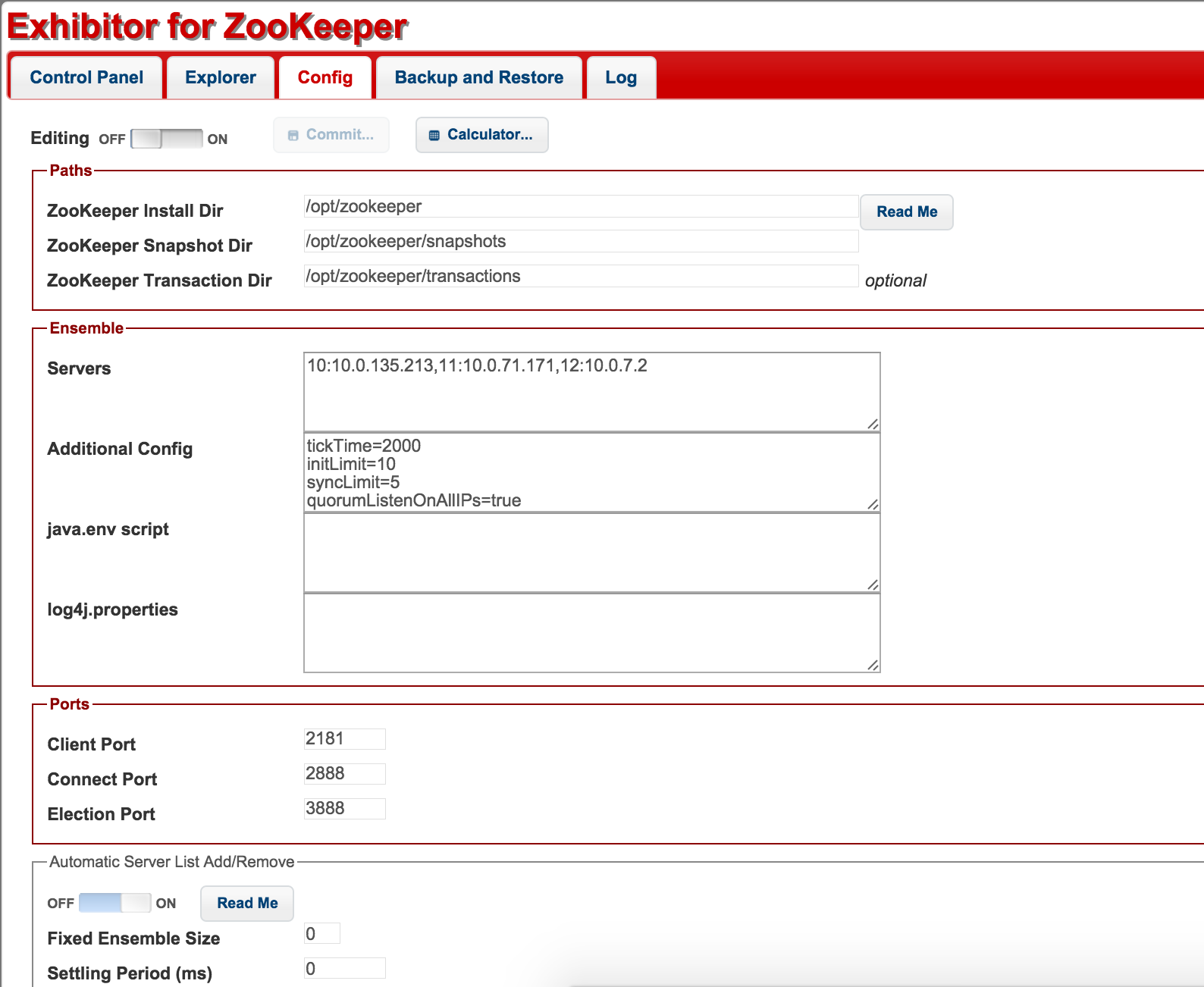Building an Autodiscovering Apache Zookeeper Cluster in AWS using Packer, Ansible and Terraform
Following my pattern of building AMIs for applications, I create my Apache Zookeeper cluster with Packer for my AMI and Terraform for the infrastructure. This Zookeeper cluster is auto-discovering of the other nodes that are determined to be in the cluster
###Building Zookeeper AMIs with Packer
The packer template looks as follows:
{
"variables": {
"ami_id": "",
"private_subnet_id": "",
"security_group_id": "",
"packer_build_number": "",
},
"description": "Zookeeper Image",
"builders": [
{
"ami_name": "zookeeper-{{user `packer_build_number`}}",
"availability_zone": "eu-west-1a",
"iam_instance_profile": "app-server",
"instance_type": "t2.small",
"region": "eu-west-1",
"run_tags": {
"role": "packer"
},
"security_group_ids": [
"{{user `security_group_id`}}"
],
"source_ami": "{{user `ami_id`}}",
"ssh_timeout": "10m",
"ssh_username": "ubuntu",
"subnet_id": "{{user `private_subnet_id`}}",
"tags": {
"Name": "zookeeper-packer-image"
},
"type": "amazon-ebs"
}
],
"provisioners": [
{
"type": "shell",
"inline": [ "sleep 10" ]
},
{
"type": "shell",
"script": "install_dependencies.sh",
"execute_command": "echo '' | {{ .Vars }} sudo -E -S sh '{{ .Path }}'"
},
{
"type": "ansible-local",
"playbook_file": "zookeeper.yml",
"extra_arguments": [
"--module-path=./modules"
],
"playbook_dir": "../../"
}
]
}
The install_dependencies.sh script is as described previously
The ansible playbook for Zookeeper looks as follows:
- hosts: all
sudo: yes
pre_tasks:
- ec2_tags:
- ec2_facts:
roles:
- base
- zookeeper
- exhibitor
The base playbook installs a base role for all the base pieces of my system (e.g. Logstash, Sensu-client, prometheus node_exporter) and then proceeds to install zookeeper. As a last step, I install exhibitor. Exhibitor is a co-process for monitoring, backup/recovery, cleanup and visualization of zookeeper.
The zookeeper ansible role looks as follows:
- name: Download ZooKeeper
get_url: url=http://www.mirrorservice.org/sites/ftp.apache.org/zookeeper/current/zookeeper-{{ zookeeper_version }}.tar.gz dest=/tmp/zookeeper-{{ zookeeper_version }}.tar.gz mode=0440
- name: Unpack Zookeeper
command: tar xzf /tmp/zookeeper-{{ zookeeper_version }}.tar.gz -C /opt/ creates=/opt/zookeeper-{{ zookeeper_version }}
- name: Link to Zookeeper Directory
file: src=/opt/zookeeper-{{ zookeeper_version }}
dest=/opt/zookeeper
state=link
force=yes
- name: Create zookeeper group
group: name=zookeeper system=true state=present
- name: Create zookeeper user
user: name=zookeeper groups=zookeeper system=true home=/opt/zookeeper
- name: Create Zookeeper Config Dir
file: path={{zookeeper_conf_dir}} owner=zookeeper group=zookeeper recurse=yes state=directory mode=0644
- name: Create Zookeeper Transations Dir
file: path=/opt/zookeeper/transactions owner=zookeeper group=zookeeper recurse=yes state=directory mode=0644
- name: Create Zookeeper Log Dir
file: path={{zookeeper_log_dir}} owner=zookeeper group=zookeeper recurse=yes state=directory mode=0644
- name: Create Zookeeper DataStore Dir
file: path={{zookeeper_datastore_dir}} owner=zookeeper group=zookeeper recurse=yes state=directory mode=0644
- name: Setup log4j
template: dest="{{zookeeper_conf_dir}}/log4j.properties" owner=root group=root mode=644 src=log4j.properties.j2
The role itself is very simple. The zookeeper cluster is managed by exhibitor so there are very few settings passed to zookeeper at this point. One thing to note though, this requires an installation of the Java JDK to work.
The exhibitor playbook looks as follows:
- name: Install Maven
apt: pkg=maven state=latest update_cache=yes
- name: Create Exhibitor Install Dir
file: path={{ exhibitor_install_dir }} state=directory mode=0644
- name: Create Exhibitor Build Dir
file: path={{ exhibitor_install_dir }}/{{ exhibitor_version }} state=directory mode=0644
- name: Create Exhibitor POM
template: src=pom.xml.j2
dest={{ exhibitor_install_dir }}/{{ exhibitor_version }}/pom.xml
- name: Build Exhibitor jar
command: '/usr/bin/mvn clean package -f {{ exhibitor_install_dir }}/{{ exhibitor_version }}/pom.xml creates={{ exhibitor_install_dir }}/{{ exhibitor_version }}/target/exhibitor-{{ exhibitor_version }}.jar'
- name: Copy Exhibitor jar
command: 'cp {{ exhibitor_install_dir }}/{{ exhibitor_version }}/target/exhibitor-{{ exhibitor_version }}.jar {{exhibitor_install_dir}}/exhibitor-standalone-{{ exhibitor_version }}.jar creates={{exhibitor_install_dir}}/exhibitor-standalone-{{ exhibitor_version }}.jar'
- name: Exhibitor Properties Config
template: src=exhibitor.properties.j2
dest={{ exhibitor_install_dir }}/exhibitor.properties
- name: exhibitor upstart config
template: src=upstart.j2 dest=/etc/init/exhibitor.conf mode=644 owner=root
- service: name=exhibitor state=started
This role has a lot more configuration to set as it essentially manages zookeeper. The template files for configuration are all available to download.
The variables for the entire playbook look as follows:
zookeeper_hosts: "{{ansible_fqdn}}:2181"
zookeeper_version: 3.4.6
zookeeper_conf_dir: /etc/zookeeper/conf
zookeeper_log_dir: /var/log/zookeeper
zookeeper_datastore_dir: /var/lib/zookeeper
zk_s3_bucket_name: "mys3bucket"
monasca_log_level: WARN
exhibitor_version: 1.5.5
exhibitor_install_dir: /opt/exhibitor
The main thing to note here is that the exhibitor process starts with the following configuration:
exec java -jar {{ exhibitor_install_dir }}/exhibitor-standalone-{{exhibitor_version}}.jar --port 8181 --defaultconfig /opt/exhibitor/exhibitor.properties --configtype s3 --s3config {{ zk_s3_bucket_name }}:{{ ansible_ec2_placement_region }} --s3backup true --hostname {{ ec2_private_ip_address }} > /var/log/exhibitor.log 2>&1
This means that the node will check itself into a configuration file in S3 and that all other zookeepers will read the same configuration file and can form the cluster required. You can read more about Exhibitor shared configuration on their github wiki.
When I launch the instances now, the zookeeper cluster will be formed
###Deploying Zookeeper Infrastructure with Terraform
The infrastructure of the Zookeeper cluster is pretty simple:
resource "aws_security_group" "zookeeper" {
name = "digit-zookeeper-sg"
description = "Zookeeper Security Group"
vpc_id = "${aws_vpc.default.id}"
ingress {
from_port = 0
to_port = 0
protocol = "-1"
cidr_blocks = ["0.0.0.0/0"]
}
egress {
from_port = "0"
to_port = "0"
protocol = "-1"
cidr_blocks = ["0.0.0.0/0"]
}
tags {
Name = "ZooKeeper Node"
}
}
resource "aws_launch_configuration" "zookeeper_launch_config" {
image_id = "${var.zookeeper_ami_id}"
instance_type = "${var.zookeeper_instance_type}"
iam_instance_profile = "zookeeper-server"
key_name = "${aws_key_pair.terraform.key_name}"
security_groups = ["${aws_security_group.zookeeper.id}","${aws_security_group.node.id}"]
enable_monitoring = false
lifecycle {
create_before_destroy = true
}
root_block_device {
volume_size = "${var.digit_zookeeper_volume_size}"
}
}
resource "aws_autoscaling_group" "zookeeper_autoscale_group" {
name = "zookeeper-autoscale-group"
availability_zones = ["${aws_subnet.primary-private.availability_zone}","${aws_subnet.secondary-private.availability_zone}","${aws_subnet.tertiary-private.availability_zone}"]
vpc_zone_identifier = ["${aws_subnet.primary-private.id}","${aws_subnet.secondary-private.id}","${aws_subnet.tertiary-private.id}"] launch_configuration = "${aws_launch_configuration.zookeeper_launch_config.id}"
min_size = 0
max_size = 100
desired = 3
tag {
key = "Name"
value = "zookeeper"
propagate_at_launch = true
}
tag {
key = "role"
value = "zookeeper"
propagate_at_launch = true
}
}
When Terraform is applied here, a 3 node cluster of zookeeper will be created. You can go to exhibitor and see the configuration e.g.

